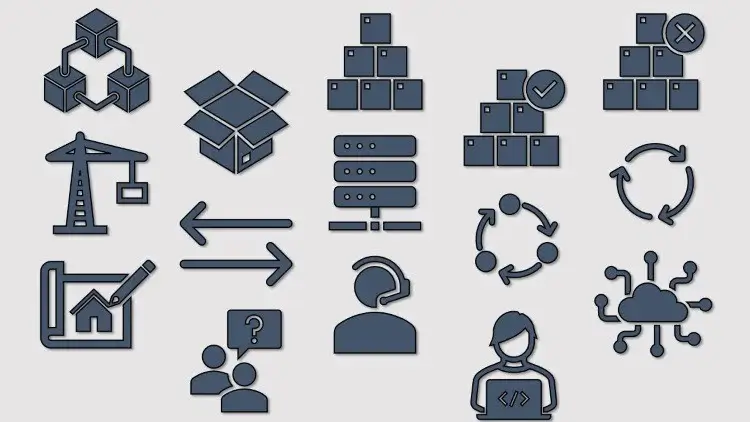Comprehensive Guide to Software Architecture
System architecture plays a fundamental role in the development and success of any software project. It defines the structure, processes, and interactions within a system, ultimately determining its scalability, efficiency, and maintainability. A well-designed software architecture ensures smooth data throughput across different components, allowing for future optimizations and seamless scaling as the project evolves.
In this course, we explore the principles and best practices of software architecture, equipping learners with the knowledge to design, implement, and extend software architectures effectively. Whether you are an aspiring software architect, a technical lead, or a developer looking to deepen your understanding, this course provides valuable insights into the essential concepts of System architecture
Why Study Software Architecture?
The foundation of any successful software system lies in its architecture. Poorly designed architectures can lead to performance bottlenecks, scalability issues, and increased maintenance costs. Good architects learn from the best practices established by experienced professionals, refining their skills to create robust and adaptable software solutions.
Throughout this course, we will cover fundamental architectural principles and key conceptual requirements that apply to most software projects. Each concept is framed as a question that architects should ask themselves during the design and implementation phases, ensuring that critical aspects of the system are considered from the outset.
By the end of this course, participants will:
Gain a deep understanding of different types of software architectures.
Learn how to create simple yet effective System architecture
Develop skills to maintain, expand, and refine existing architectures.
Understand the nuances and best practices that lead to scalable and efficient software systems.
Be able to assess the long-term impact of architectural decisions.
This course is not just for aspiring software architects but also for technical leaders, developers of all levels, and testers who wish to expand their knowledge of software architecture.
What is software architecture?
Software architecture is the high-level design of a software system, outlining its components and how they interact. It ensures the system meets technical requirements like scalability, performance, and security while being maintainable and flexible. The architecture acts as a blueprint for developers, guiding the system’s structure and functionality.
Course Structure and Topics
The course is structured into six key sections, each focusing on a different aspect of software architecture:
1. Introduction of this course
Overview of software architecture and its importance.
How System architecture influences performance, scalability, and maintainability.
The role of a software architect and the skills required.
Common architectural patterns and their use cases.
2. Understanding the Foundations of Software Architecture
2.1 Introduction
Definition and objectives of software architecture.
Key considerations when designing an architecture.
2.2 Principles of Software Architecture
Modularity and separation of concerns.
Scalability and performance optimization.
Security and compliance considerations.
Maintainability and extensibility.
2.3 Essential Components of Software Architecture
Layers and their roles in an application.
Microservices vs. monolithic architectures.
Communication protocols and APIs.
2.4 Static Structural Diagrams
Understanding the structural view of software systems.
UML diagrams and their application in architecture design.
2.5 Dynamic Diagrams and Their Importance
Sequence diagrams and workflow representation.
How dynamic diagrams help visualize system behavior.
3. Creating a Software Architect
3.1 Introduction
Steps to designing a robust software architecture.
Identifying system requirements and constraints.
3.2 How to Start Creating a Software Architect
Gathering functional and non-functional requirements.
Selecting the appropriate architecture style.
3.3 Designing Interfaces and Their Role in Architecture
Principles of designing clean and efficient interfaces.
Defining contracts between different system components.
3.4 Interaction Between Components and Objects
Managing dependencies and ensuring loose coupling.
Effective inter-service communication strategies.
3.5 Databases in System Architecture
Choosing between SQL and NoSQL databases.
Database design principles and best practices.
3.6 The Role of Dynamic Diagrams in Architecture Development
How dynamic diagrams enhance architecture visualization.
Tools for creating and managing architectural diagrams.
4. Maintaining and Expanding Software Architect
4.1 Introduction
Importance of architectural maintenance.
Challenges in evolving software architectures.
4.2 Managing an Architecture After Implementation
Strategies for monitoring and optimizing System architecture
Refactoring and technical debt management.
4.3 Essential Information for Programmers
Best practices for coding within an architectural framework.
Documentation and knowledge sharing.
4.4 Supporting a System architecture
Tools and techniques for continuous integration and deployment.
Handling versioning and backward compatibility.
4.5 Extending an Architecture for Future Needs
When and how to scale an existing architecture.
Introducing new features without compromising stability.
5. Advanced Software Architect Concepts
5.1 Introduction
Exploring advanced architectural patterns.
Future trends in software architecture.
5.2 Summary of Major Architectural Structures
Layered, event-driven, microservices, and service-oriented architectures.
Case studies on real-world architectural implementations.
5.3 Long-Term Impact of Architectural Decisions
How architecture influences software lifecycle and business strategy.
5.4 Software Architecture as a Mindset, Not Just a Profession
The evolving role of a software architect in the tech industry.
Key qualities and thought processes of successful architects.
5.5 Common Architecture Mistakes and How to Avoid Them
Identifying pitfalls in architectural decision-making.
Case studies of failed architectures and lessons learned.
6. Course Conclusion and Final Takeaways
Summarizing key learnings from the course.
How to continue improving architectural skills.
Resources for further study and professional growth.
Who Should Take This Course?
This course is ideal for:
Software developers who want to build a strong foundation in software architecture.
Technical leads and engineering managers looking to enhance their architectural skills.
Aspiring software architects who want to understand core principles and best practices.
IT professionals involved in designing and maintaining scalable software systems.
Software testers who want to understand the impact of architecture on testing strategies.
Anyone interested in learning how to build robust and future-proof software architectures.
By the end of this course, participants will be well-equipped to design, implement, and maintain software architectures that align with business goals, ensuring long-term success and scalability.
Join us today and take the first step towards mastering this course.
Contact Us for more udemy courses.
I am a skilled content writer passionate about crafting engaging and impactful content. With expertise in creating SEO-friendly articles, blog posts, and web content, I specialize in delivering compelling narratives that resonate with diverse audiences. Dedicated to quality and creativity, I ensure every piece stands out and leaves a lasting impression.



